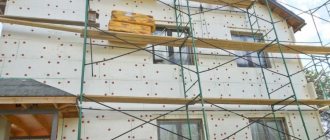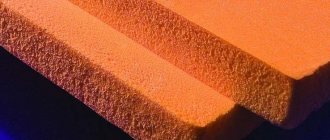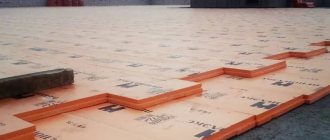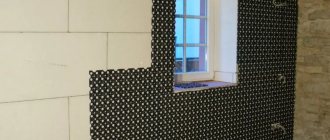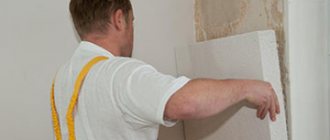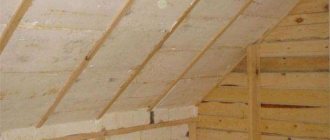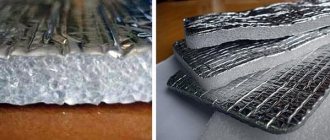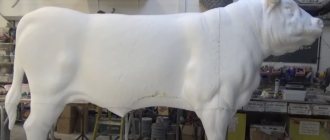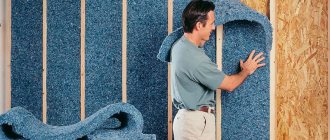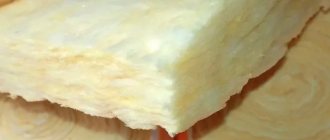Real estate
00:00, 10.28.2021 8 Plot: House in focus
5 questions about what is good and bad about this material
Photo: strojdvor.ru
Polystyrene foam (aka EPS, aka expanded polystyrene) is still one of the most popular insulation materials used in the construction of individual houses. Facades and foundations, basement and roofing - they don’t just use them for insulation! In the last couple of decades, with the advent of more modern and expensive materials, cheap foam has come under various accusations, and one may get the impression that using it is frankly a thing of the past, a harmful practice and bad form. We are figuring out what he is really guilty of, and where he can be rehabilitated.
What is PPP and how does it differ from EPP? Or is it the same thing?
Expanded polystyrene foam (EPS) and extruded polystyrene foam (EPS) are made from the same substance - polystyrene. But the manufacturing technology is fundamentally different, so the output is products with different properties. So it's definitely not the same thing.
Expanded polystyrene (our polystyrene foam) is made by foaming a suspension of polystyrene. A press is not used: a granular mass is obtained, from which slabs of the required size are then cut. The structure is obtained with pronounced large air pores, but they are closed. That's why polystyrene foam is so warm: its thermal conductivity is very low.
And extruded polystyrene foam is obtained if the foamed mass of polystyrene is not left to harden as is, but is pressed through an extruder. The structure is also porous, but the press compresses the pore diameter to tenths of a millimeter (for polystyrene foam - several millimeters).
Photo tk-lanskoy.ru
Thus, in appearance, foam plastic can be distinguished from EPS:
- the structure of the foam is rough, in its cross-section you can always see those “sealed” balls, and the EPS is smooth and shiny;
- by color - polystyrene foam is produced only in white, and EPS can be of different colors (pale pink, gray, yellow);
- according to the shape of the slabs - polystyrene foam is very often produced in the form of square slabs of 1x1 m, and EPS are rectangular slabs 58-60 cm wide and 1 to 2.4 meters long.
Is it true that polystyrene foam is carcinogenic and unnatural?
The only truly natural insulation used in modern construction is tow. Everything else is artificially created materials. But is naturalness really that important if all required safety standards are met during production?
If you do not lick the polystyrene foam and organize a normal ventilation system at home, insulating your home with it is a safe undertaking. Modern polystyrene foam is dried during production until free styrene molecules are removed from it (which, in fact, could theoretically pose a danger to human health). The remainder of styrene can be released from the insulation later during operation, but numerous tests show that it is within the maximum permissible concentration limits, which means it is not dangerous to human health. For styrene to become carcinogenic, tens of thousands of times more of its molecules must enter the body than occurs in practice.
Photo beton-feodosiya.ru
Is furniture made from chipboard plywood harmful to health?
Today, more and more people are striving to surround themselves with natural, environmentally friendly materials - wood, stone, glass and ceramics. For this reason, there is growing distrust among consumers towards materials produced using modern technologies and synthetic components.
One such building material is particle board or chipboard. There is a widespread belief that chipboard poses a danger to humans, as it releases toxic compounds into the atmosphere. This statement is supported by many buyers and some experts.
But is chipboard actually harmful to human health and can this material cause diseases?
To find the answer to this question, you need to understand how chipboard is produced, where this material is used, and whether there are ways to reduce its toxicity to humans. Properties of chipboard
Chipboard is a building material made by hot pressing wood chips from different types of wood. To add strength, synthetic resins are added to this material, which reliably glue the chips and help maintain the required shape.
For the manufacture of chipboards, low-quality wood and waste from wood processing enterprises are used. To do this, they are crushed to the state of sawdust, then water-soluble urea-formaldehyde synthetic resins are added and slabs are formed.
High-quality particle boards are a fairly durable material, but do not tolerate moisture well. To increase moisture resistance, they are covered with plastic, veneer or polymer film. Such stoves can be used in rooms with high levels of humidity, for example, in the bathroom or kitchen.
To improve the appearance of chipboard, it is covered with paper that imitates various types of wood. These boards are widely used in the production of furniture, namely tables, beds, cabinets, shelves, office furniture and desks for educational institutions.
Chipboard is often used for interior wall decoration, which allows you to get an absolutely flat surface on which all types of wallpaper and paints fit perfectly. And thanks to the high heat and sound insulating properties of chipboard, it helps to significantly insulate the room and protect it from extraneous sounds.
Perhaps the most significant advantage of chipboard over natural wood is its low price. The slabs themselves and the furniture made from them have a significantly lower cost, which means they are available to people even with low incomes.
Unlike wood or plywood, particle boards do not dry out, delaminate, and do not tend to curl. They retain their original shape well, have fairly high impact resistance and, with good density, can last for decades.
Positive properties of chipboard:
- Low price;
- Completely flat surface;
- Durability, no tendency to dry out;
- Wide variety of colors;
- With a protective layer, high moisture resistance;
- Good sound and heat insulation;
- Widest sector of application.
Damage to chipboard
So why is chipboard dangerous for humans? The harmful properties of chipboard are associated with the peculiarities of its production, namely the use of urea-formaldehyde resin as a binding component. It contains a highly toxic substance, formaldehyde, which is extremely harmful to humans.
Based on the results of numerous studies, formaldehyde was officially recognized as a dangerous carcinogen. This substance can cause allergies, irritation of the skin and mucous membranes of the eyes, inflammation of the respiratory tract, and with prolonged exposure, cancer.
But the main harm from phenol-formaldehyde resin is experienced by workers of chipboard production enterprises, who are forced to use special protective equipment. In the finished chipboard, the formaldehyde content is low and is not capable of affecting humans.
According to the standards adopted in Russia, the concentration of formaldehyde in chipboard should not exceed 10 mg. per 100 gr. dry mass. This amount of this substance is considered safe for people and, according to doctors, is not capable of causing deterioration in health.
In addition, uncoated chipboard is used only for finishing and repair work, during which this material will be covered with a layer of paint or wallpaper. In all other cases, particle boards always have a protective layer, including one that protects people from formaldehyde fumes.
Thus, chipboard furniture is most often made from laminated chipboards (LDSP). This significantly increases its service life and prevents formaldehyde from entering the atmosphere. At the same time, the ends of the boards are always covered with a special edge material, which prevents wood shavings impregnated with synthetic resin from coming into contact with air.
Such furniture can be used in any room, including children's rooms. It is sometimes even safer than furniture made from certain types of wood, which can also emit harmful emissions.
How to choose furniture from chipboard
Many people today prefer to buy furniture made from chipboard, since it costs much less than wood. But in order not to painfully regret your purchase, you should know how to choose a quality bed, table or wardrobe from a huge variety of products.
It is important to remember that chipboard can cause health hazards only when low-quality material is used. Therefore, when purchasing furniture, you should make sure that it fully complies with GOST and is produced without violations in technology.
You can ask a sales consultant about the quality of chipboard, or even better, ask him to provide all the necessary certificates for furniture. If they are not available, then you should refuse to purchase such products, as they can pose a real danger to humans.
Modern classification of chipboard:
- E1 - this marking means that the chipboard is of the highest quality and contains no more than 10 mg. formaldehyde per 100 g. composite. In Russia and in foreign countries, it is allowed to produce furniture from such material for residential premises, including those where children will live;
- E2 - this marking indicates the low quality of chipboard, therefore products made from it are prohibited from being installed in residential buildings and educational institutions for children.
To minimize possible damage from chipboard, furniture made from this material should not be placed close to the radiator or other heat sources. The fact is that when the stove heats up, the release of formaldehyde increases significantly, which means the health hazard increases.
Sometimes, immediately after purchase, furniture may have a sharp, unpleasant odor, which, as a rule, completely disappears after a few days. To do this, you need to wipe it with a damp cloth and ventilate the room more often. If the smell does not decrease, you must return the product to the manufacturer or exchange it for other furniture without the smell.
What can be insulated with polystyrene foam and why is it so loved?
They love polystyrene foam primarily for its relative cheapness. Compared to mineral wool, it is at least half the price. It is also one of the warmest building materials (in terms of thermal conductivity, it is second only to EPS). This is facilitated by a huge number of air pores: and you and I know that the more there are, the better the material retains heat. It also does not weigh down the structure of the house (which means it frees you from the need to calculate the foundation for this load), has good moisture resistance, is not subject to rot and mold, and is durable. The foam does not shrink and does not lose its original volume, and is also perfectly attached to the surface.
It is used, for example, when pouring monolithic floors and slab foundations; it fits well under the screed. Foam plastic shows itself well in wet facades, when insulating window and door slopes.
Impact of polyurethane foam on the environment
Due to the fact that polyurethane foam covers the surface with a dense layer of thermal insulation, energy losses become minimal. There are no drafts, noise, or condensation in the room. This reduces the environmental burden.
High-quality spraying and material features make it possible to make the insulation layer thin, but reliably protecting from the cold. This helps save on electricity. The long service life of polyurethane foam reduces repair costs. Insulation can be replaced less frequently, which means natural resources will remain untouched longer.
The environmental safety of polyurethane foam is confirmed by its low flammability class, as well as the absence of toxic emissions during operation. This makes the material one of the most environmentally friendly on the market and allows you to avoid spending money on air purification. Ultimately helps reduce harmful emissions into the atmosphere.
What should not be insulated with polystyrene foam and why is it so disliked?
Firstly, expanded polystyrene has certain problems with vapor permeability. Therefore, stone wool is more often used in SFTK (wet facade systems), if the construction budget allows. It is less warm, but it allows steam to pass through much better, and this is absolutely critical for wall materials with high vapor permeability (for example, aerated concrete). But it is categorically not recommended to insulate walls made of foamed concrete with foam plastic: under it they will inevitably become damp, with all the consequences.
Secondly, the PPS may catch fire. In terms of this indicator, it is completely destroyed by basalt wool, so it is still categorically not recommended to use polystyrene foam in ventilation facade systems. Wooden floors and attic roofs should not be insulated with it either. True, polystyrene foam is self-extinguishing and does not support combustion, but fire from it may well have time to spread to wood or other flammable materials.
Photo naxapet.ru
Verdict: guilty, but not of everything
Use any building material wisely. If you are planning a ventilated facade, polystyrene foam will not be suitable for insulating the house, because it is a fire hazard. If the walls are made of a material with high vapor permeability, that’s okay too, because then they will become damp.
But there are no obstacles to insulating a slab foundation. Concrete floors are perfectly insulated with expanded polystyrene, and the walls of a house made of not very vapor-permeable material are also insulated (but only with the “wet facade” technology).
If you are still concerned about the non-environmental friendliness or other negatively promoted properties of this material, it can be used to insulate buildings in which you will not live (at least permanently). Thus, almost every country house in Tatarstan is insulated with foam plastic. You may also have sheds, garages and other outbuildings on your property. And to save money, it is quite possible to use good old polystyrene foam there.
Lyudmila Gubaeva
Real Estate Tatarstan
Durability
The use of this material as insulation in construction practice has a relatively short period of time. And therefore, scientists are studying polystyrene foam very closely for durability.
One of the parameters that expanded polystyrene must comply with is the thickness of the insulation. And this is an important parameter, since it affects the thermal conductivity of the material and naturally entails additional costs for heating the premises.
The most remarkable incident in construction practice occurred during the major renovation of an underground shopping center in Moscow, which was built just a few years ago. After dismantling the covering, significant destruction of the polystyrene foam boards was discovered. As a result, after only two years of operation, the thickness of individual slabs decreased from the design value by more than 8 times.
A study of insulation in external walls showed that the heat transfer value decreased by 49–59%.
After a series of investigations, the reason for this condition of the insulation boards was identified. It was caused primarily by non-compliance with construction technology and design errors. The physical and chemical characteristics of expanded polystyrene were not taken into account.
